[Windows 11/10] How to use Task Manager to check computer performance
Update : 2025/09/19 15:55
[Windows 11/10] How to use Task Manager to check computer performance
Applicable Products: Notebook, Desktop, All-in-One PC, Gaming Handheld, MiniPC, ASUS NUC
Task Manager is a tool to manage applications and processes in Microsoft Windows system. It allows user to check current processes and provides relevant information about computer performance.
If you experience that poor computer performance, over-heating, the fan keeps running or short battery life (the battery’s discharge rate will depend on the running applications in your computer), you can use Task Manager to check whether an application is using more of the CPU or Memory resources than expected.
Please go to the corresponding instruction based on the current Windows operating system on your device:
Windows 11 operating system
Use Task Manager to check applications with the occupied computer resource
- Right-click the [Start] icon
 on the taskbar①, then select [Task Manager]②.
on the taskbar①, then select [Task Manager]②.
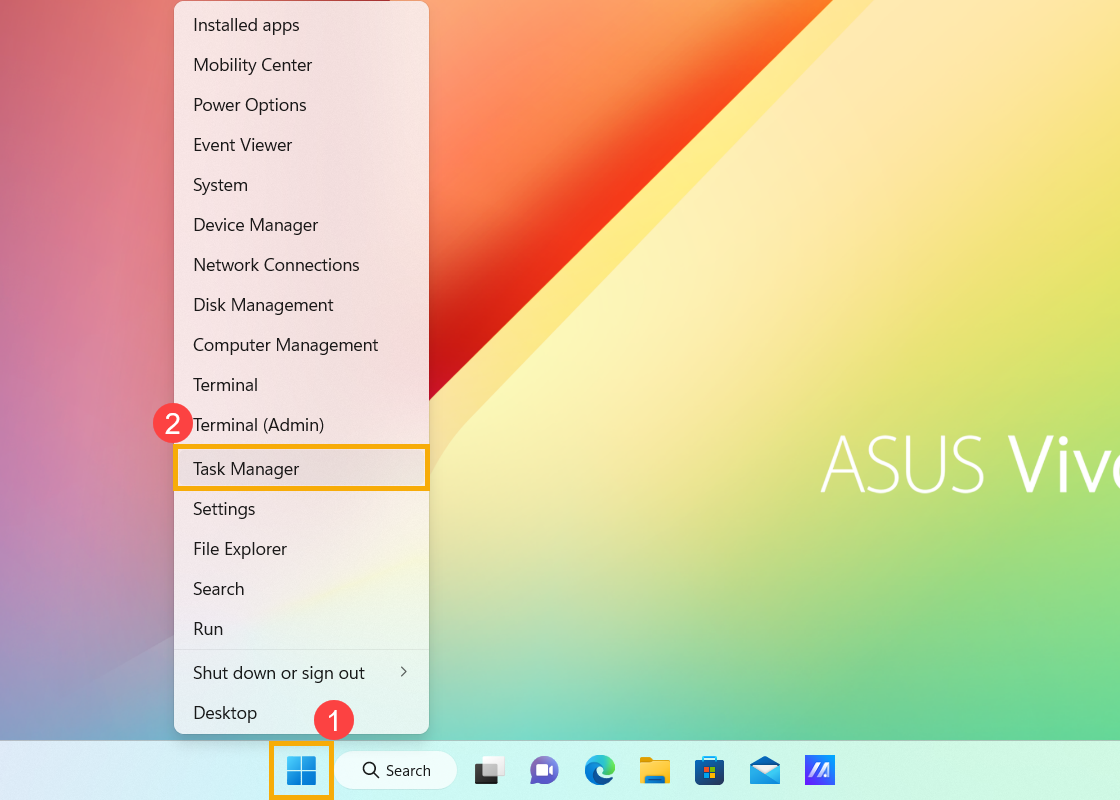
- In Task Manager, right-click on the Name column③, then select [Type]④ to see which type that each process belongs to.
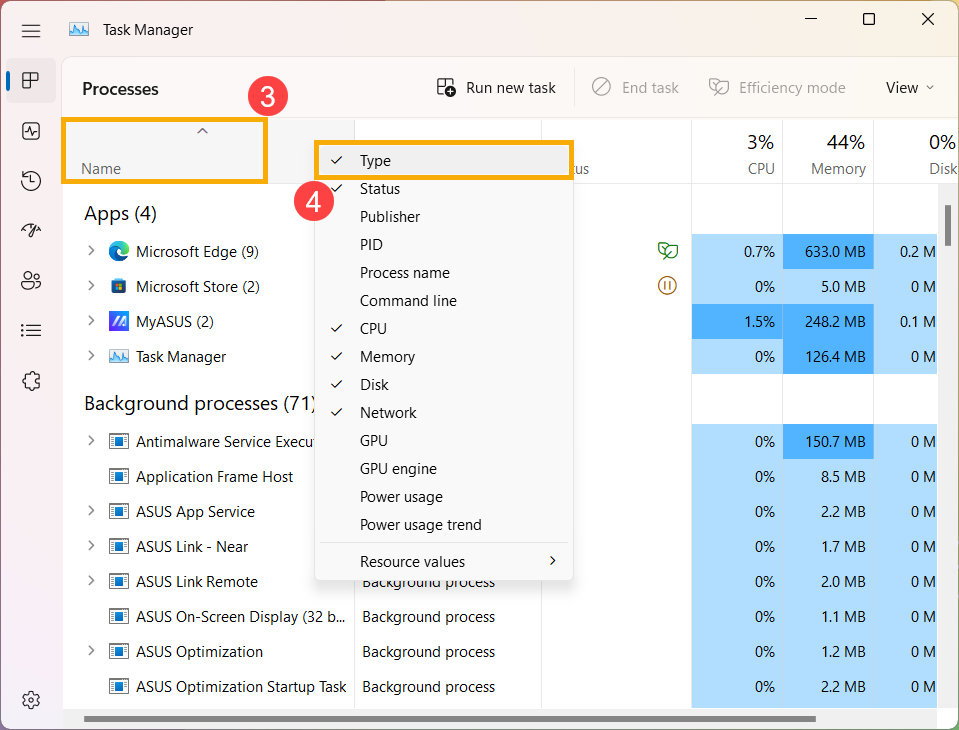
- If you want to see how applications are affecting your CPU, please click [CPU]⑤ column. It will sort by the percentage of CPU capability used (largest to smallest) by each process after the down-arrow
 appeared.
appeared.

- If you want to see how applications are affecting your Memory, please click [Memory]⑥ column. It will sort by the percentage of Memory capability used (largest to smallest) by each process after the down-arrow
 appeared.
appeared.
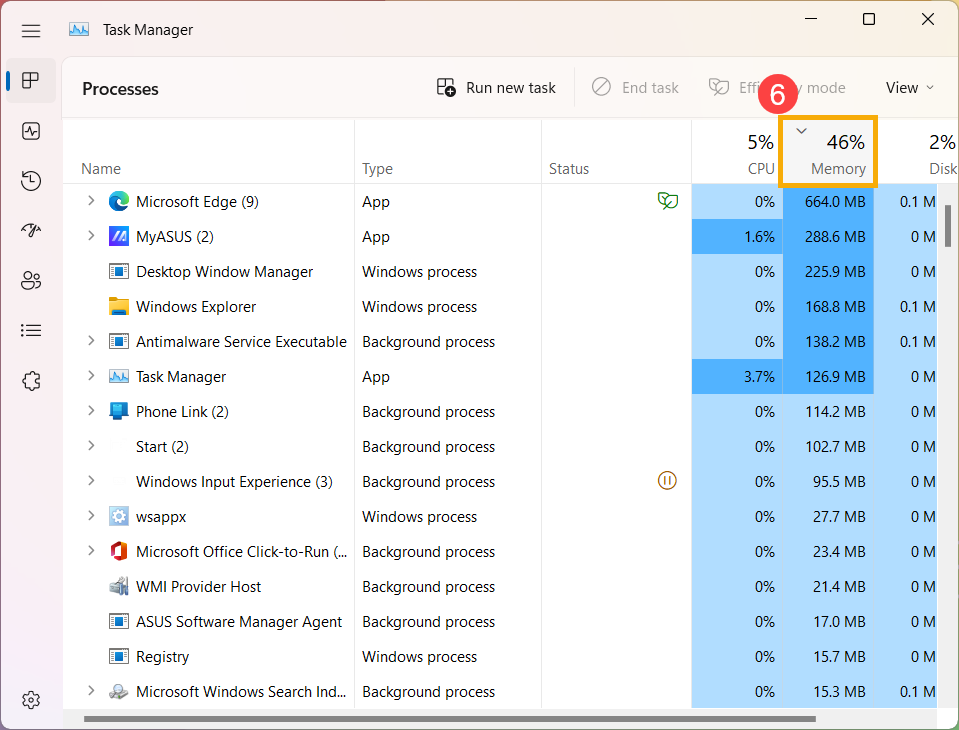
- After it sorts by the percentage of resources used by each process, you will see the occupied resources which belongs to applications type in your computer.
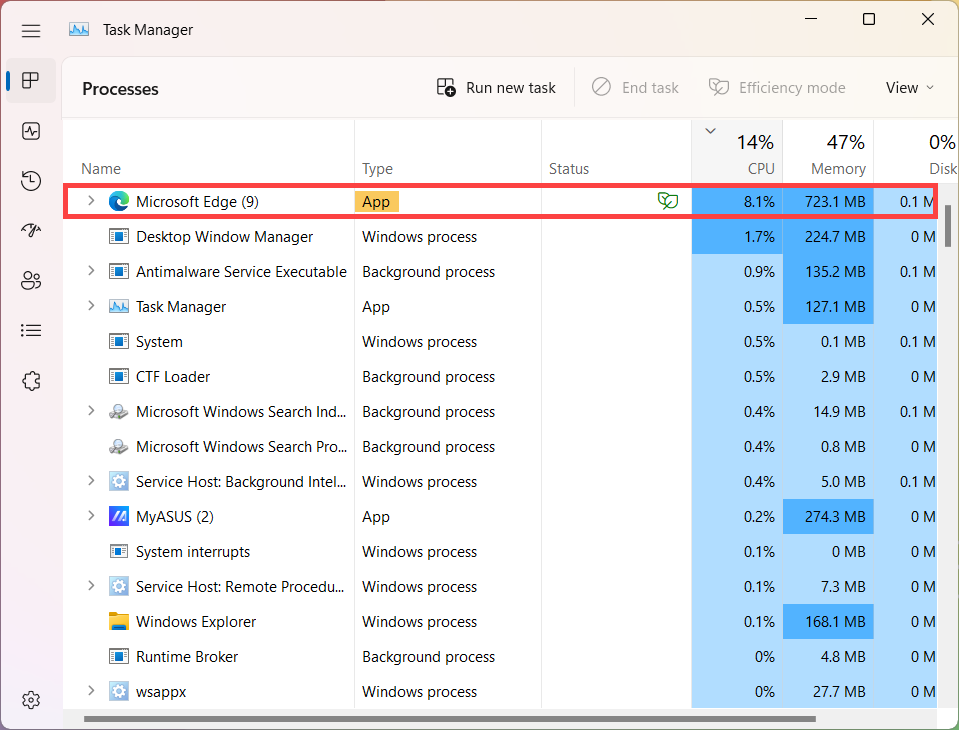
- If you would like to check the used status of other resources (such as Disk, Network, or GPU), please follow the above steps 3-6.
End any malfunctioning processes
While you observe some applications occupy a larger percentage of the resource, and you are not using them, if you want to end these processes, please try to normally close them first. (For example, open this application and click close.)
If it cannot be closed normally or the resource is still occupied in Task Manager after closing it, you can use Task Manager to force it to close.
Right-click on the process①, then select [End task]②, this process will be forced to close.
Note: If the type is not “App” (such as Windows process), we don’t recommend that you force to close it to prevent any abnormal system operation.

Windows 10 operating system
Use Task Manager to check applications with the occupied computer resource
- Right-click on the anywhere of taskbar, then select [Task Manager]①.
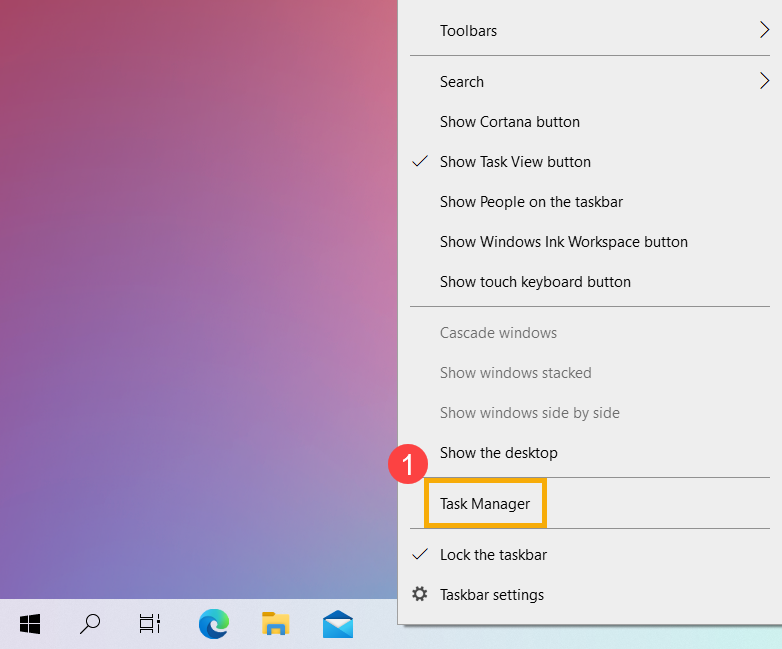
- If you see the following illustration, please click [More details]②.
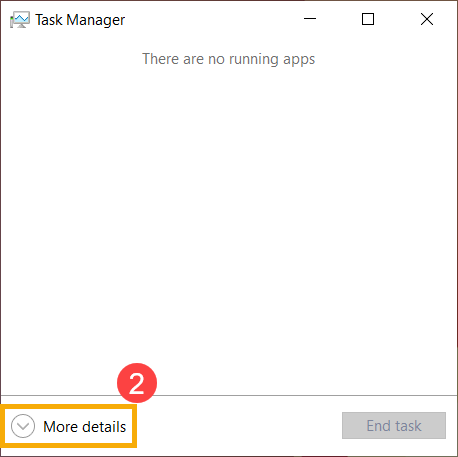
- In Task Manager, right-click on the Name column③, then select [Type]④ to see which type that each process belongs to.
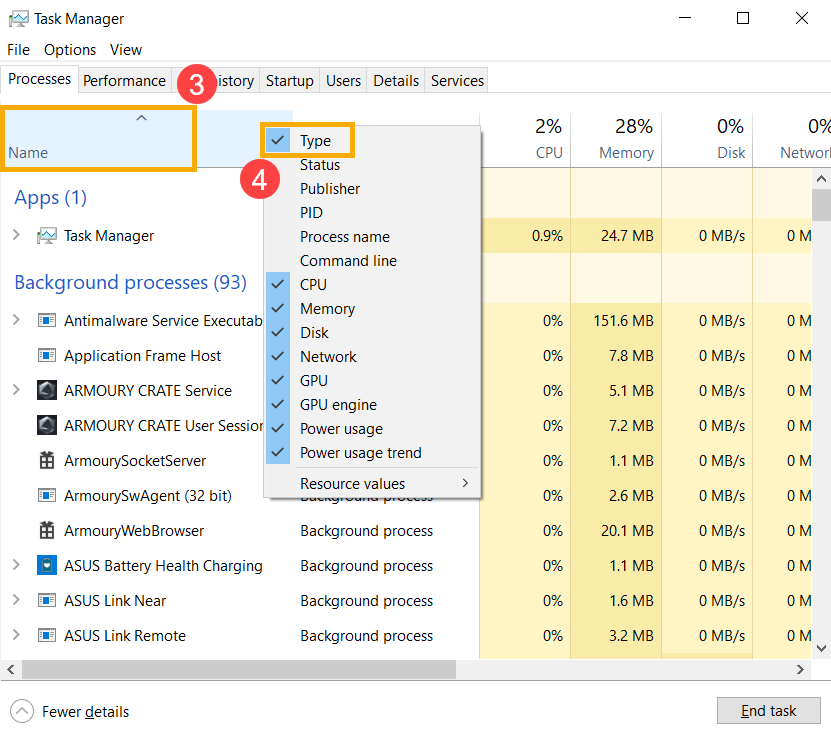
- If you want to see how applications are affecting your CPU, please click [CPU]⑤ column. It will sort by the percentage of CPU capability used (largest to smallest) by each process after the down-arrow
 appeared.
appeared.
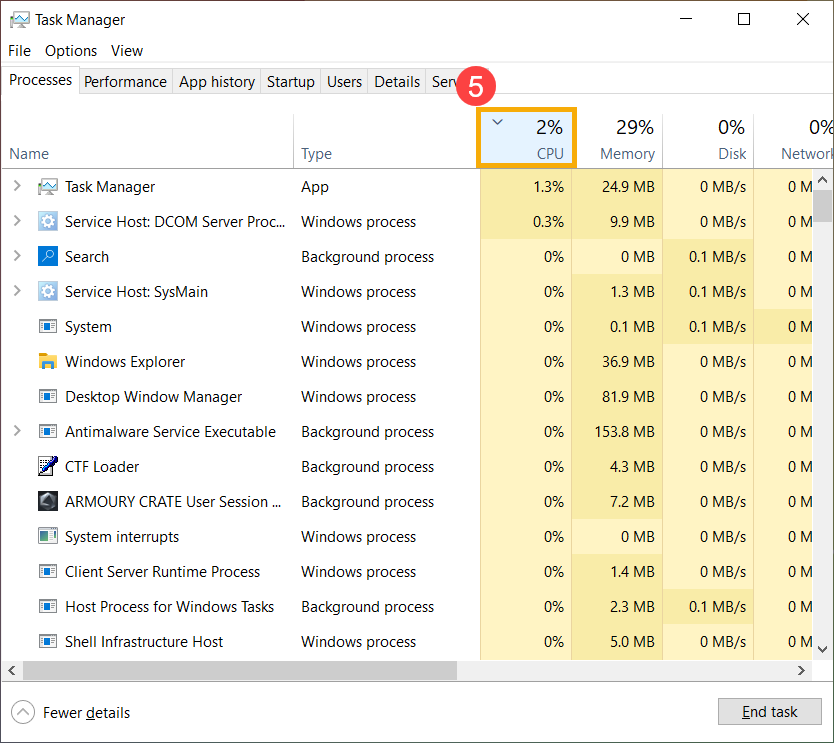
- If you want to see how applications are affecting your Memory, please click [Memory]⑥ column. It will sort by the percentage of Memory capability used (largest to smallest) by each process after the down-arrow
 appeared.
appeared.
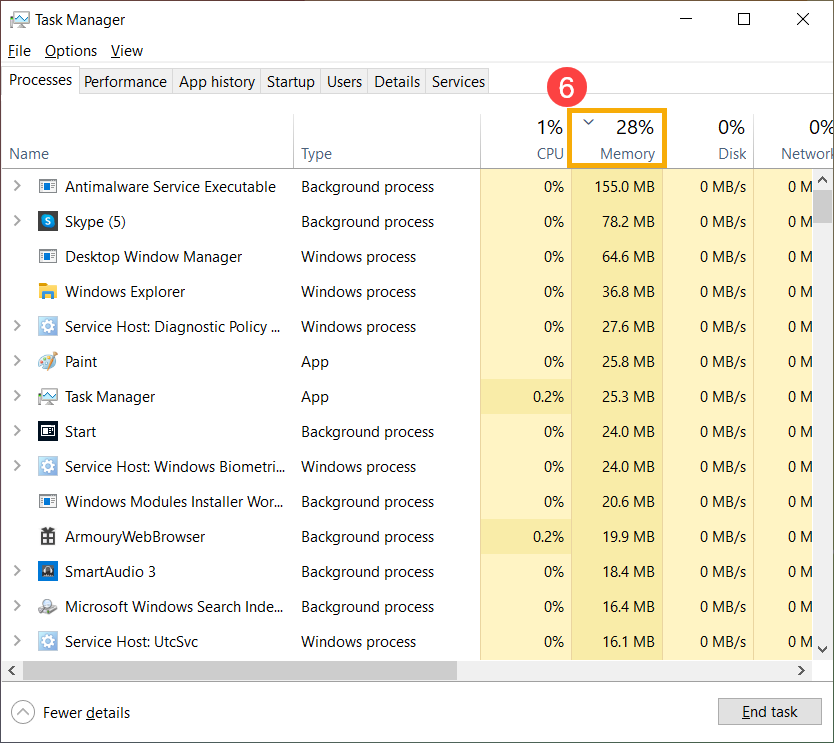
- After it sorts by the percentage of resources used by each process, you will see the occupied resources which belongs to applications type in your computer.
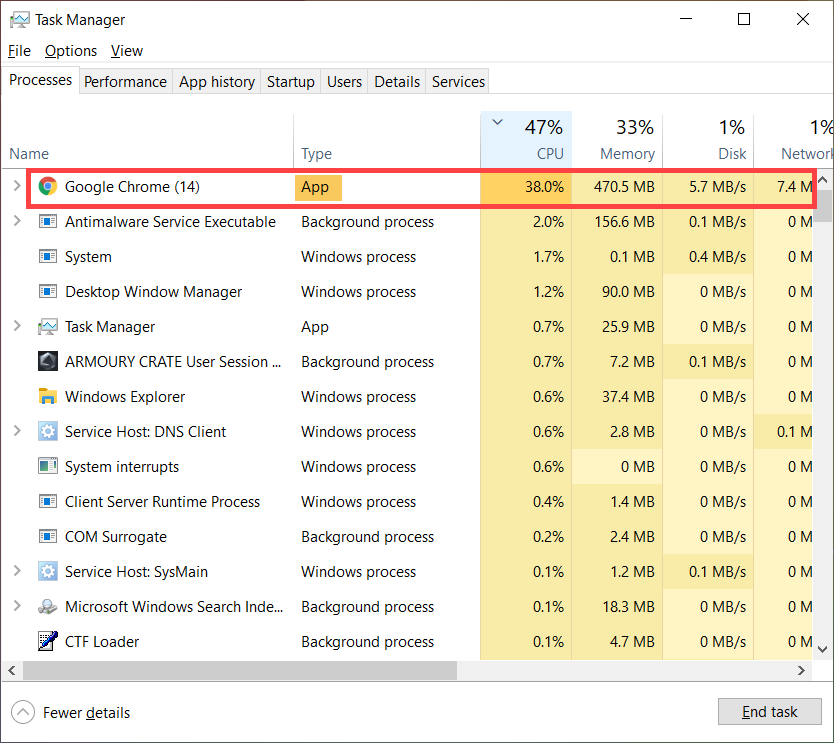
- If you would like to check the used status of other resources (such as Disk, Network, or GPU), please follow the above steps 3-6.
End any malfunctioning processes
While you observe some applications occupy a larger percentage of the resource, and you are not using them, if you want to end these processes, please try to normally close them first. (For example, open this application and click close.)
If it cannot be closed normally or the resource is still occupied in Task Manager after closing it, you can use Task Manager to force it to close.
Right-click on the process①, then select [End task]②, this process will be forced to close.
Note: If the type is not “App” (such as Windows process), we don’t recommend that you force to close it to prevent any abnormal system operation.

Notice
Above information might be partly or entirely quoted from exterior websites or sources. please refer to the information based on the source that we noted. Please directly contact or inquire the sources if there is any further question and note that ASUS is neither relevant nor responsible for its content/service.
This information may not suitable for all the products from the same category/series. Some of the screen shots and operations could be different from the software versions.
ASUS provides the above information for reference only. If you have any questions about the content, please contact the above product vendor directly. Please note that ASUS is not responsible for the content or service provided by the above product vendor.
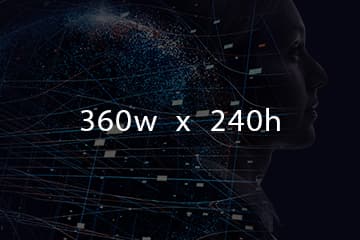

 on the taskbar
on the taskbar

 appeared.
appeared. 
 appeared.
appeared. 








